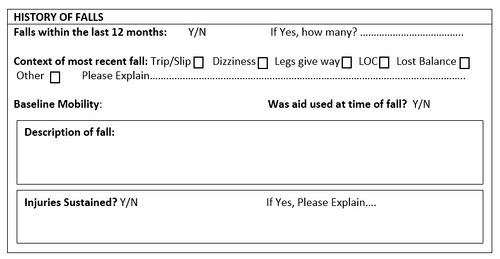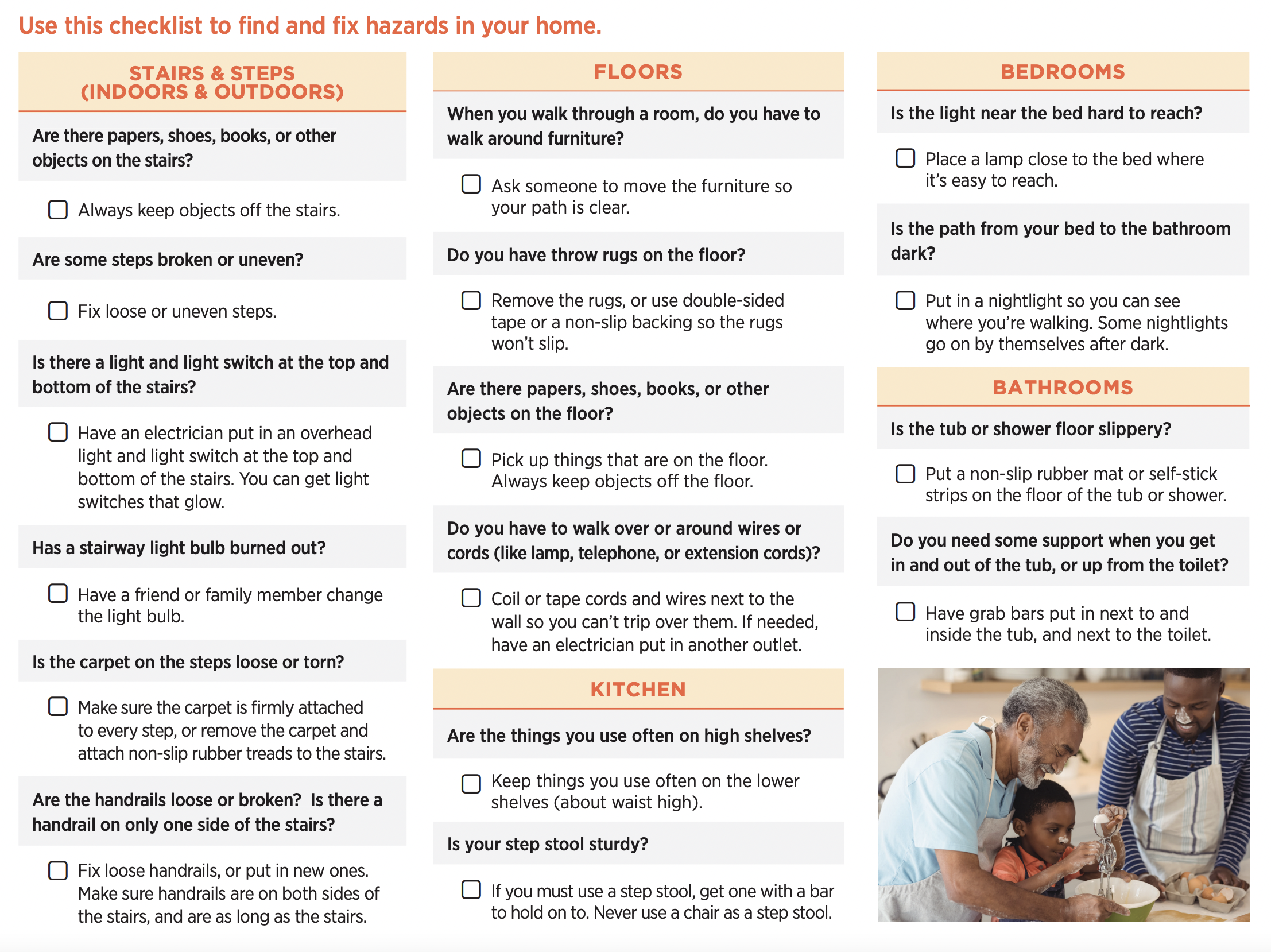Some Ideas on Dementia Fall Risk You Need To Know
Some Ideas on Dementia Fall Risk You Need To Know
Blog Article
The 7-Minute Rule for Dementia Fall Risk
Table of ContentsDementia Fall Risk for DummiesDementia Fall Risk Can Be Fun For AnyoneExcitement About Dementia Fall RiskDementia Fall Risk Fundamentals Explained
A loss risk evaluation checks to see how likely it is that you will certainly fall. It is mostly done for older adults. The analysis typically includes: This includes a series of inquiries regarding your general wellness and if you've had previous falls or troubles with equilibrium, standing, and/or strolling. These devices check your toughness, equilibrium, and stride (the method you stroll).Treatments are suggestions that might reduce your threat of falling. STEADI consists of 3 steps: you for your danger of dropping for your risk variables that can be improved to try to prevent drops (for instance, balance issues, impaired vision) to minimize your threat of dropping by making use of reliable approaches (for example, providing education and learning and resources), you may be asked a number of concerns including: Have you fallen in the previous year? Are you fretted about dropping?
You'll sit down once again. Your provider will certainly inspect for how long it takes you to do this. If it takes you 12 seconds or more, it might mean you go to greater risk for a fall. This test checks stamina and equilibrium. You'll being in a chair with your arms crossed over your upper body.
The placements will get more difficult as you go. Stand with your feet side-by-side. Relocate one foot midway forward, so the instep is touching the huge toe of your other foot. Move one foot completely in front of the other, so the toes are touching the heel of your other foot.
Some Known Incorrect Statements About Dementia Fall Risk
Many falls occur as an outcome of numerous adding factors; for that reason, handling the risk of dropping begins with recognizing the elements that add to drop risk - Dementia Fall Risk. A few of one of the most relevant threat variables include: Background of prior fallsChronic medical conditionsAcute illnessImpaired stride and balance, reduced extremity weaknessCognitive impairmentChanges in visionCertain risky medicines and polypharmacyEnvironmental aspects can also raise the threat for falls, consisting of: Poor lightingUneven or damaged flooringWet or unsafe floorsMissing or damaged hand rails and order barsDamaged or incorrectly fitted equipment, such as beds, wheelchairs, or walkersImproper usage of assistive devicesInadequate supervision of individuals residing in the NF, including those who show aggressive behaviorsA effective loss danger administration program calls for a complete medical evaluation, with input from all members of the interdisciplinary group

The care strategy ought to likewise consist of interventions that are system-based, such as those that advertise a safe atmosphere (appropriate illumination, handrails, order bars, etc). The effectiveness of the interventions must be examined occasionally, and the treatment strategy changed as required to reflect adjustments in the autumn threat evaluation. Implementing an autumn threat monitoring system using evidence-based ideal technique can lower the occurrence of drops in the NF, while restricting the possibility for fall-related injuries.
Some Known Details About Dementia Fall Risk
The AGS/BGS guideline suggests evaluating all adults matured 65 years and older for loss danger every year. This testing is composed of asking clients whether they check this site out have actually fallen 2 or even more times in the previous year or sought medical focus for an autumn, or, if they have not dropped, whether they feel unstable when walking.
Individuals who have actually fallen as soon as without injury needs to have their balance and stride assessed; those with gait or equilibrium irregularities should receive additional analysis. A history of 1 autumn without injury and without gait or equilibrium troubles does not necessitate why not try these out more evaluation beyond continued yearly loss danger testing. Dementia Fall Risk. A fall threat analysis is needed as part of the Welcome to Medicare examination

Little Known Facts About Dementia Fall Risk.
Recording a drops history is among the quality signs for fall prevention and management. A vital part of threat Clicking Here evaluation is a medication review. Numerous classes of medicines raise fall danger (Table 2). Psychoactive medicines specifically are independent predictors of drops. These medications tend to be sedating, change the sensorium, and harm equilibrium and stride.
Postural hypotension can often be relieved by minimizing the dosage of blood pressurelowering drugs and/or quiting medicines that have orthostatic hypotension as a negative effects. Use above-the-knee support tube and sleeping with the head of the bed boosted may also minimize postural decreases in blood stress. The suggested elements of a fall-focused physical exam are displayed in Box 1.

A yank time above or equivalent to 12 secs suggests high fall danger. The 30-Second Chair Stand examination evaluates reduced extremity stamina and equilibrium. Being incapable to stand from a chair of knee elevation without making use of one's arms indicates raised fall risk. The 4-Stage Equilibrium examination evaluates fixed equilibrium by having the individual stand in 4 settings, each considerably more difficult.
Report this page